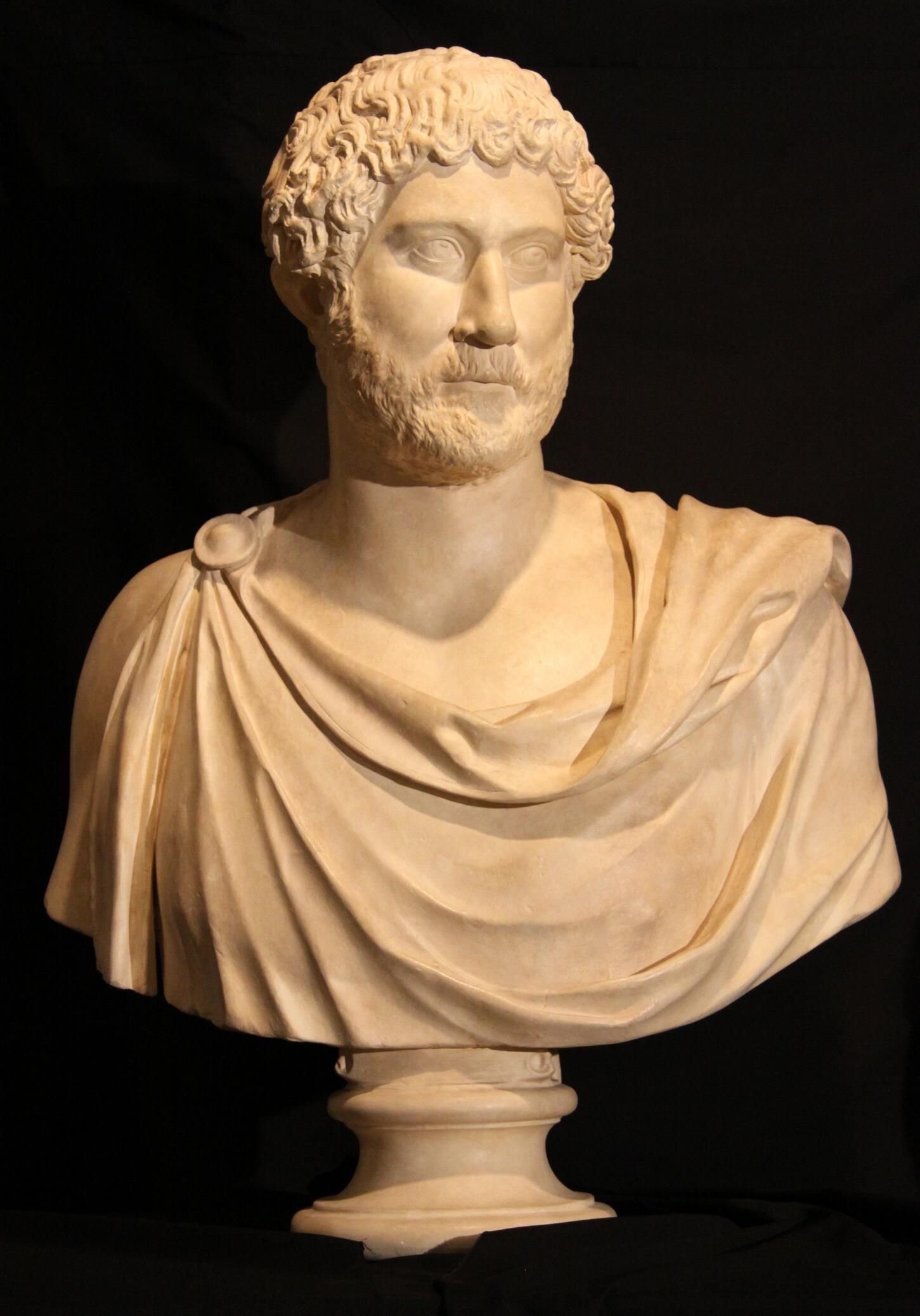Bust of Hadrian
Name/Title
Bust of HadrianEntry/Object ID
10R03137Description
Bust of a man with wavy hair and short-cropped beard. His head is turned slightly to the left and he wears a heavy cloak, pinned over his right shoulder. The bust sits on a small pedestal.Type of Sculpture
BustArtwork Details
Medium
MarbleSubject Person
HadrianContext
More than 160 portrait sculptures of Hadrian in bronze and marble exist. One suggestion for the numerous surviving portraits of the Emperor was the extent to which he traveled around the Roman Empire, and the period of peace that existed under his rule. The portraits of Hadrian can be divided into 8 distinct types which have common physical features based on an original model, or prototype. This statue falls under the type known as Chiaramonti 392. In the majority of Hadrian’s portraits he is depicted with a close-cropped beard and mustache, with flattened curls brushed forward in waves. He was the first Roman Emperor to consistently wear and portray himself with a beard and, in doing so, made wearing a beard a popular fashion amongst Roman males. A majority of Roman Emperors followed this imperial standard set by Hadrian up until the time of Constantine (306-337CE). It is not known for certain why Hadrian chose to wear a beard. One practical theory is that the beard covered up facial scars or blemishes. Another popular theory is that the beard signified Hadrian’s fondness for Greek culture and philosophers. Beards could also carry a military connotation for the Romans and this may have been a visual cue to the Greek-speaking Roman provinces that implied Rome’s military ability to protect its subjects. The garment worn in this portrait by Hadrian is known as a paludamentum, which is a military cloak from Imperial Rome worn by commanders but not soldiers. These were also worn by emperors to show that they were the supreme commanders of the Roman armies. After the reign of Augustus, the paludamentum was restricted solely to the emperor. Curators at the Louvre suggest that this sculpture may be a portrait head of Hadrian on a modern draped bust. The nose, mustache, ears, and bust all show evidence that they may have been retouched at a later date.Made/Created
Date made
125 CE - 150 CETime Period
Roman ImperialPlace
Institution
British MuseumCity
LondonCountry
EnglandEthnography
Culture/Tribe
Roman

